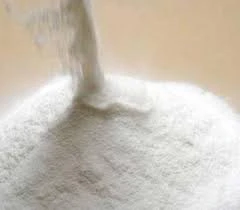Understanding Redispersible Powder (RDP) Applications and Benefits
Redispersible Powder (RDP) is a key component in the construction and building materials industry. It is primarily used in cement-based formulations and offers numerous advantages that enhance the performance of the final product. As a highly versatile ingredient, RDP is widely used in products such as tile adhesives, waterproofing compounds, and interior and exterior plaster, among others.
What is Redispersible Powder?
RDP is a type of polymer powder that can be redispersed in water to form a stable and cohesive polymer film. These powders are typically produced through the spray-drying process of aqueous polymer emulsions. When mixed with water, RDP rehydrates and forms a network that improves the overall properties of various construction materials. This unique ability sets RDP apart from traditional cement-based products, making it an essential additive for many applications.
Benefits of Using RDP
1. Improved Adhesion One of the foremost benefits of incorporating RDP is its ability to enhance the adhesion properties of mortar and plaster. The polymeric film that forms upon rehydration improves bonding between the substrate and the applied material, ensuring a longer-lasting hold.
2. Increased Flexibility RDP imparts flexibility to cementitious mixes, which is crucial in applications where substrates might experience movement or thermal expansion. This flexibility allows for better crack resistance, ultimately leading to more durable surfaces.
3. Water Resistance When added to formulations, RDP contributes to the water-repellent properties of the final product. This is particularly important in harsh weather conditions, preventing water infiltration that could lead to material degradation over time.
redispersible powder rdp

4. Enhanced Workability The presence of RDP in mortar and plaster enhances their workability, making them easier to mix, apply, and finish. This is a valuable quality for construction professionals, as it can significantly reduce labor time and increase efficiency on-site.
5. Versatility RDP can be used in a wide range of applications beyond traditional mortars and plasters. It is also effective in producing self-leveling compounds, dry-mix mortars, and repair compounds, showcasing its adaptability in various construction scenarios.
Applications in the Construction Industry
Redispersible Powder finds its application across multiple sectors within the construction industry. In tiling, for example, RDP is added to adhesive formulations to improve their contact strength and resistance to moisture. Likewise, in renovation projects, it is used in patching and repair compounds to ensure better adhesion and durability.
Furthermore, RDP plays a vital role in formulating high-performance waterproofing solutions, where its ability to create a cohesive film is essential for preventing water damage. Additionally, in lightweight applications, such as lightweight mortars and finishes, RDP contributes to weight reduction without compromising structural integrity.
Conclusion
In summary, Redispersible Powder (RDP) has become an indispensable additive in the modern construction industry due to its multifaceted benefits. Its ability to enhance adhesion, flexibility, water resistance, and workability makes it a preferred choice among construction professionals. As the demand for high-performance building materials continues to grow, the role of RDP is likely to become increasingly significant, driving innovations and improving the durability and sustainability of construction projects worldwide.
-
The Application and Significance of Construction RdpNewsMay.19,2025
-
Industrial Grade HpmcNewsMay.19,2025
-
Building Coating Adhesive Building Coating Adhesive HpmcNewsMay.19,2025
-
Application Of Hpmc For Detergent For Detergent In DetergentsNewsMay.19,2025
-
Application Of Hpmc Cellulose In Cement-Based MaterialsNewsMay.19,2025
-
Application Of High Quality Hpmc For Construction In The Field Of ConstructionNewsMay.19,2025




